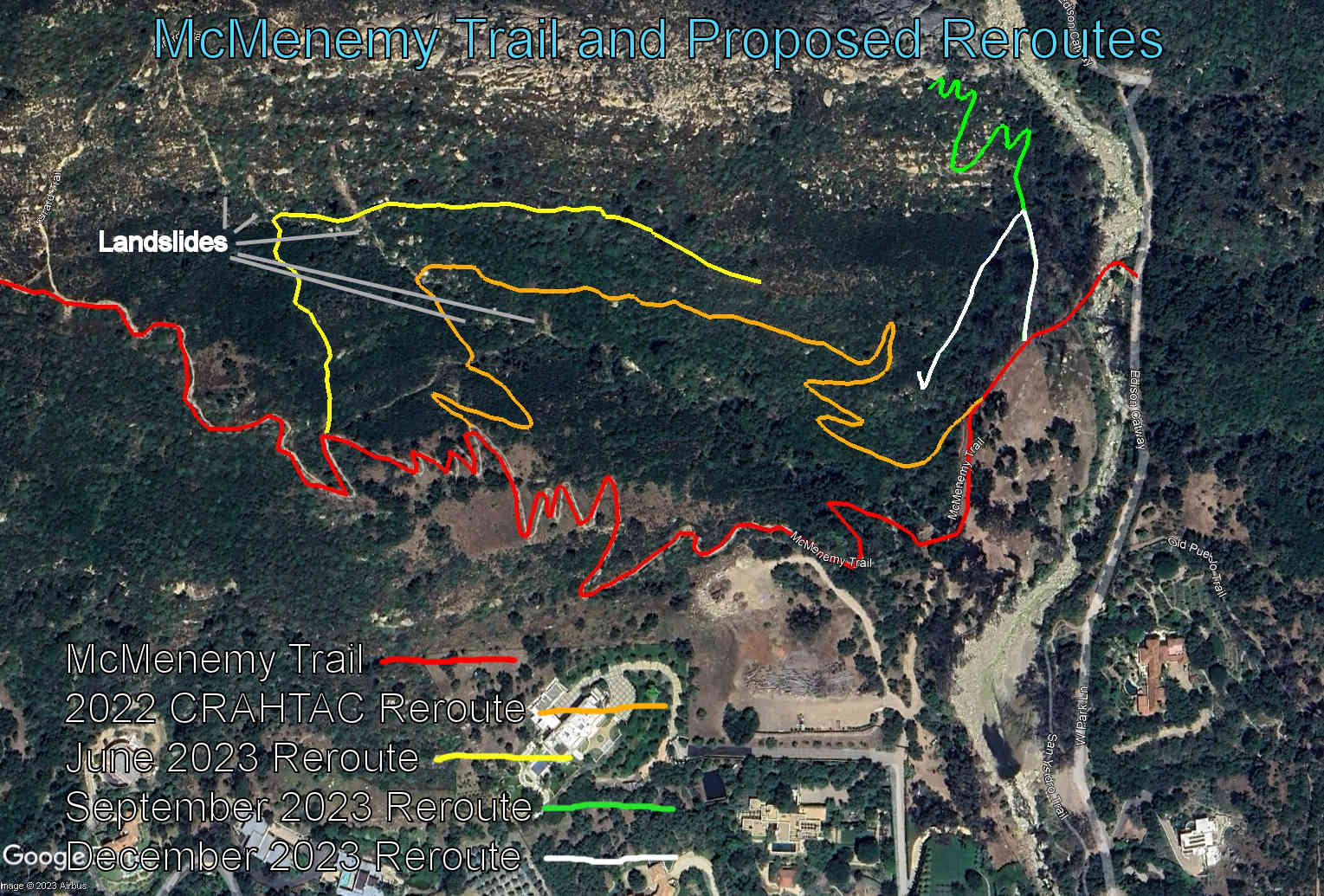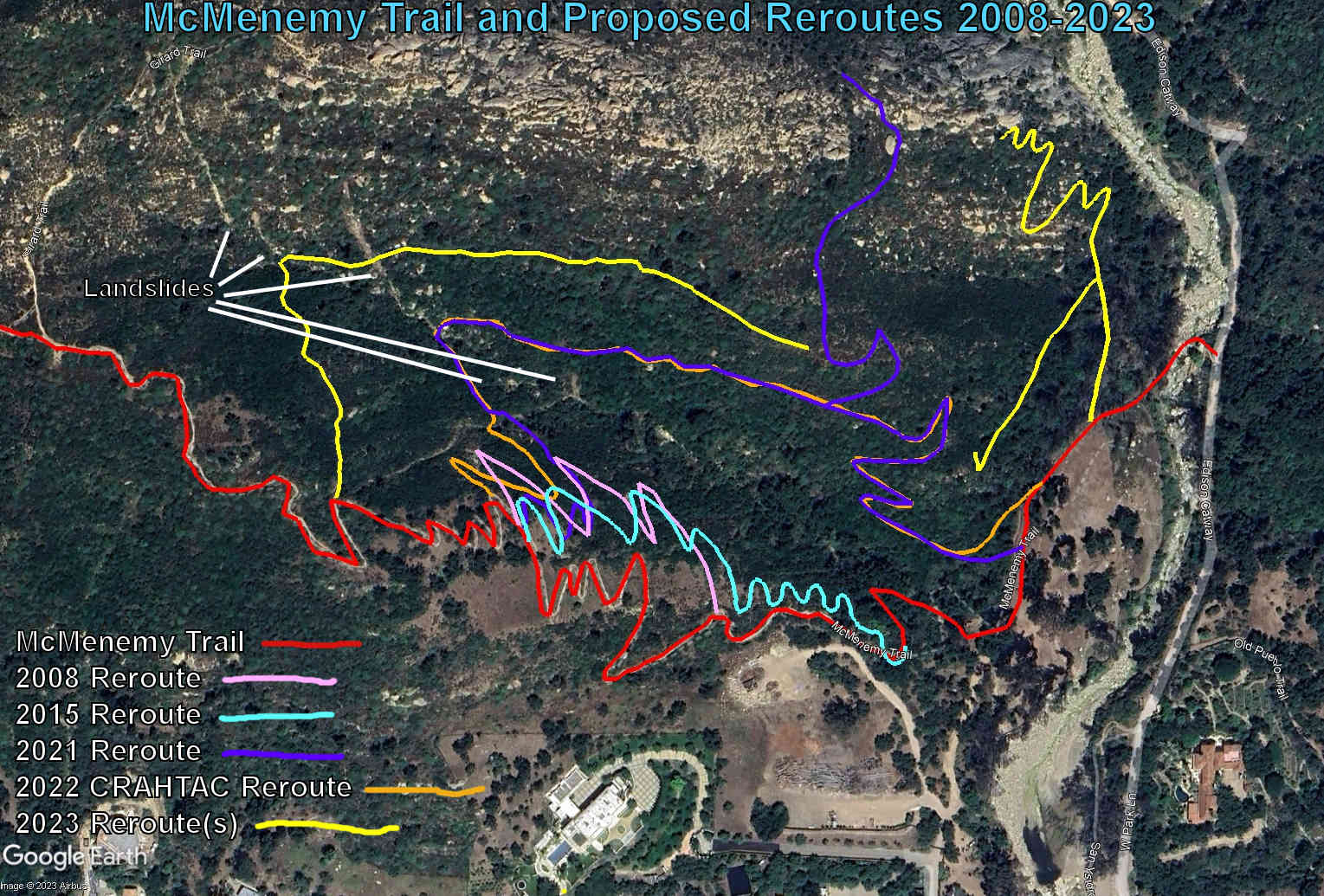McMenemy Trail Controversies
Rerouting This Trail Is on Its Third Attempt

Last week a little bird told me that a new McMenemy Trail Reroute project was underway. This past weekend I confirmed this information by taking a peek at the new reroute to confirm its existence and determined it is currently under construction. This new reroute crosses virgin ground whose hillsides have just begun to show signs of life again after the Thomas Fire left it barren. It sits on a slope that is steeper than where the current trail is located. This is the third reroute of McMenemy Trail cut this year, and it appears the trail cut just three months ago has now been abandoned in favor of this new route — for now?
The maps found within the petition link below demonstrate that the McMenemy Relocation project has gone through many transformations over the past year since CRAHTAC, short for County Riding & Hiking Trails Advisory Committee, approved the relocation in late 2022.

It’s been through even more changes since it was first dreamt up 2008.
Having been heavily involved in the Front Country Trails for well over a decade I can say that I have never seen the planning of a reroute change so much over such a short period of time. Modern trail planning typically calls for submitting a proposal route and, once approved, a preliminary line is cut. Very few changes typically come once this preliminary line (P-line) is cut in order to decrease the impact to the environment. This is where oversight by the agencies is important; to prevent exactly what has happened in the case of the McMenemy Reroute being led by the Montecito Trails Foundation.
We as trail advocates generally strive to have the minimum impact to hillsides when planning a new trail. One would normally plot this path on paper, walk the proposed path, then make necessary changes — before cutting into the fragile hillsides begins. As the attached maps show, this has not been the case with the McMenemy Relocation. Numerous trails have been cut treating the hillsides like a dry erase board of sorts. But unlike a dry erase board, these hillsides can’t be wiped clean. Instead, they will take years to return to their prior state.
Even worse that is this labyrinth of preliminary trails left behind can be used by the public. This will create even more damage to the environment long after a path is abandoned. It takes approximately 15 years for hillsides to fully regrow after an event such as the Thomas Fire.
What is occurring in the case of the McMenemy Relocation is problematic on many different levels. Information provided by CRAHTAC staff earlier this year indicated that no agency approval is required for altering the path of the 2022 reroute. This lack of agency oversight allows for exactly what we are seeing today: Planning by groups who are unqualified to plan trail reroutes, realizing at some point this route that was cut was not as they desired, then abandoning it.
What may be even more telling about this entire process is the relocation of an existing trail has never been approved before a new replacement route was known. For those who have lost count, this is the sixth reroute location cut in the past 15 years.

What we are seeing with regard to this relocation process is similar in many ways to a bizarre attraction found in San Jose. A trail that has become a labyrinth of paths, some connecting, others ending randomly, in what can be compared to Santa Barbara’s own “Winchester Mystery House” of trail projects!
Please sign the petition found at the link below to help preserve the historic McMenemy Trail from relocation and amend Santa Barbara County Trail policy planning procedure!
Dave Everett is a longtime trails maintenance organizer and volunteer in Santa Barbara’s hills and mountains.




You must be logged in to post a comment.